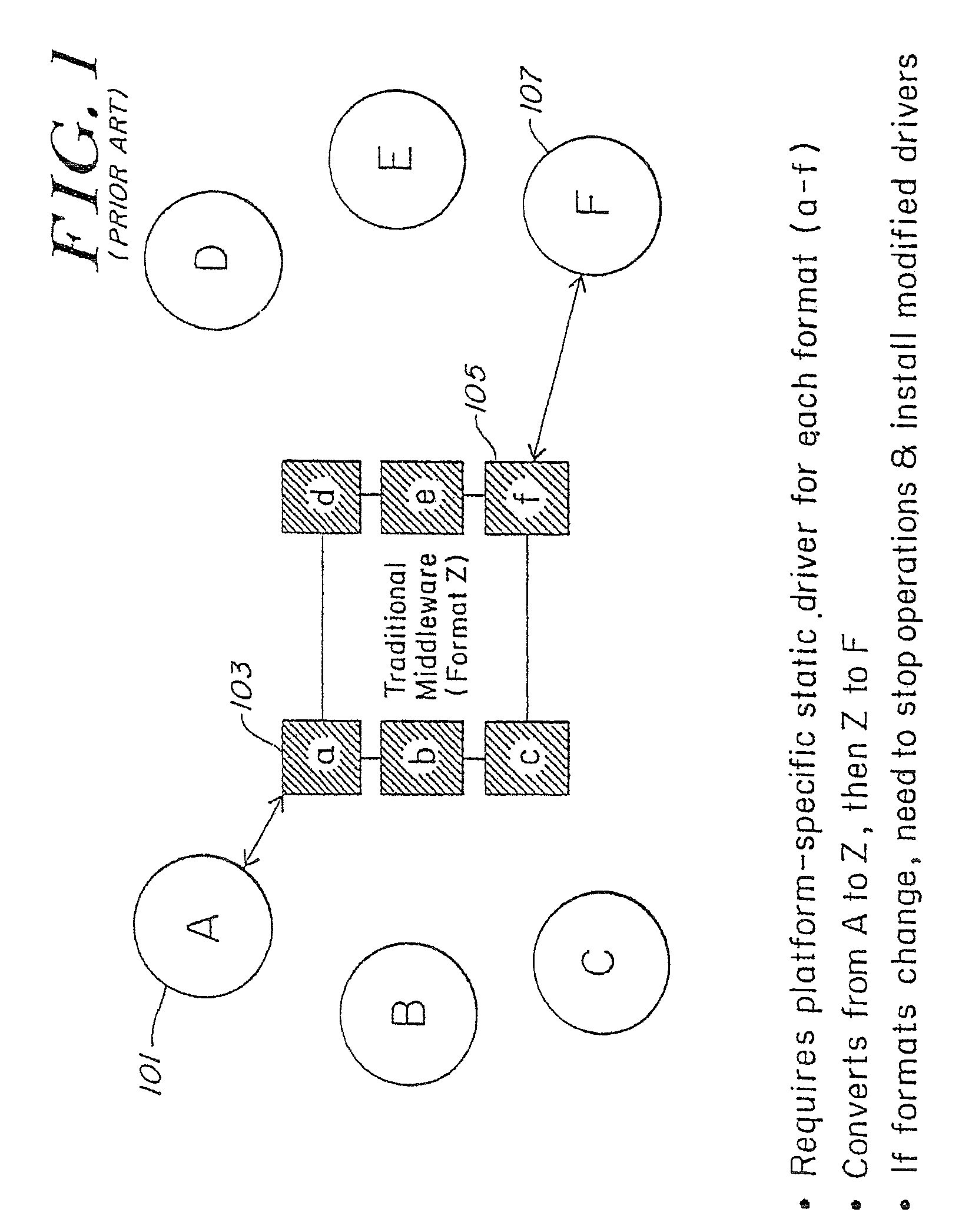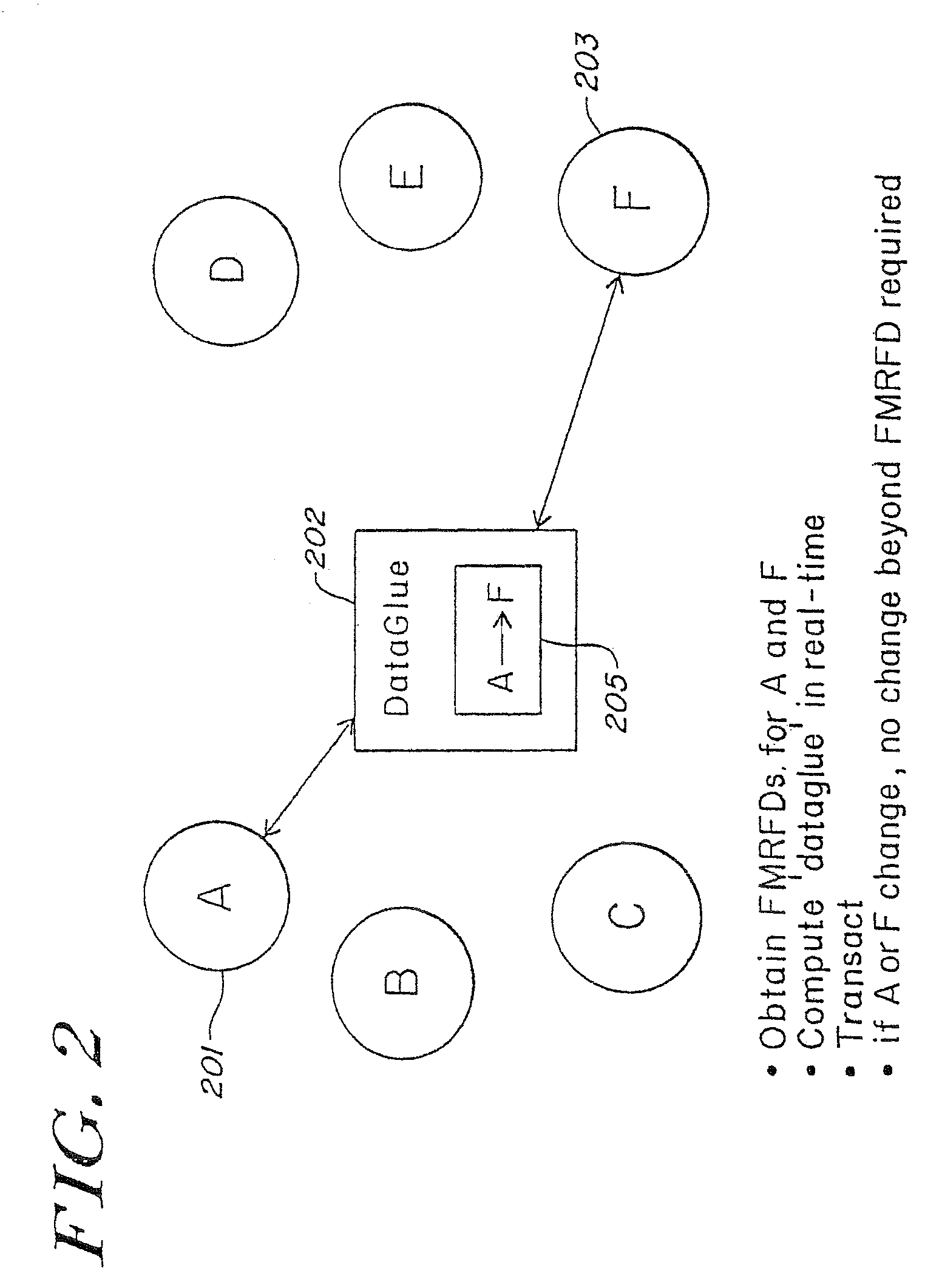Method and apparatus of streaming data transformation using code generator and translator
a data and translator technology, applied in the field of data transfer, can solve the problems of complex and difficult data and protocol translation, difficult and expensive integration of applications and data sources, complicated problem of providing connectivity between network nodes, etc., and achieve the effect of facilitating the generation of translation cod
- Summary
- Abstract
- Description
- Claims
- Application Information
AI Technical Summary
Benefits of technology
Problems solved by technology
Method used
Image
Examples
Embodiment Construction
[0064]Each node in a data communication network has a preferred data format in which it transmits and expects to receive data. As illustrated in the prior art FIG. 1, because the rapid development of data formats and protocols often results in multiple variations and implementations, two nodes A and F in a network may have differing format implementations (a) and (f), respectively. The present invention generally provides a system whereby information exchange between pairs of communicants is facilitated through run-time creation of or modifications to a data format translator, according to information known about their respective data formats.
[0065]At runtime, a data map is obtained for translation from a source format specification to a destination format, and the map is used, together with the protocol descriptions, to configure a translator compiler engine. The translator compiler engine then generates a specialized translator in machine code form. This translator consists of dyn...
PUM
 Login to View More
Login to View More Abstract
Description
Claims
Application Information
 Login to View More
Login to View More - R&D
- Intellectual Property
- Life Sciences
- Materials
- Tech Scout
- Unparalleled Data Quality
- Higher Quality Content
- 60% Fewer Hallucinations
Browse by: Latest US Patents, China's latest patents, Technical Efficacy Thesaurus, Application Domain, Technology Topic, Popular Technical Reports.
© 2025 PatSnap. All rights reserved.Legal|Privacy policy|Modern Slavery Act Transparency Statement|Sitemap|About US| Contact US: help@patsnap.com



